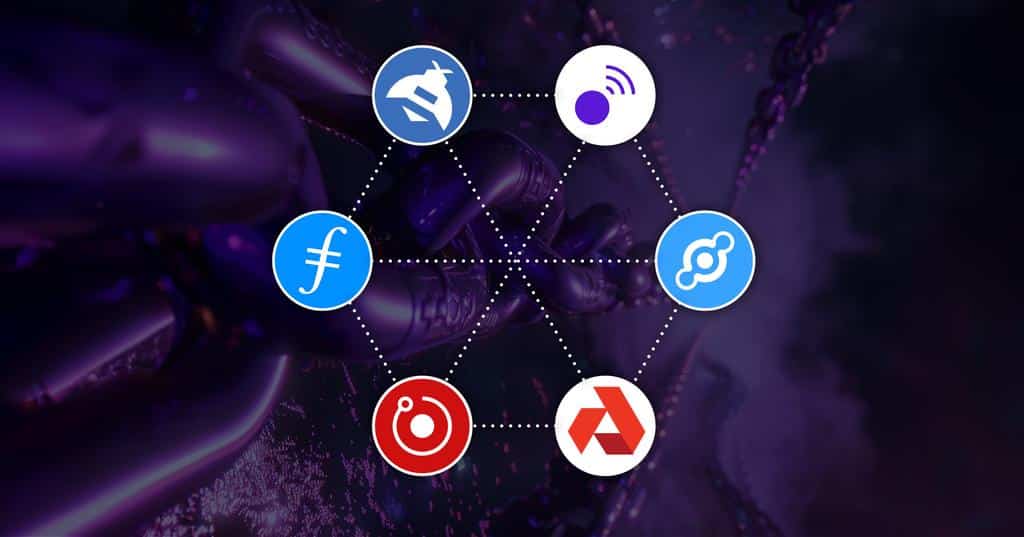Understanding DePIN: real-world use cases
May 29, 2024
We explore some compelling DePIN use cases, illustrating their potential to transform industries and create lasting value.
Decentralised Physical Infrastructure Networks (DePIN) blend the digital and physical realms to approach infrastructure, leveraging decentralised networks to manage and enhance various physical assets. DePIN involves the use of blockchain technology to decentralise and democratise the management of physical infrastructure or systems. By decentralising these systems, DePIN can reduce costs, enhance security, increase transparency, and provide more equitable access to resources. Unlike traditional infrastructure businesses, which are often plagued by inefficiencies and centralised control, DePIN operates on a model of shared ownership and open-source principles, driving innovation and community inclusivity.
The growth and sustainability of DePIN will depend largely on overcoming technological and economic hurdles, making education and community engagement paramount to success. DePIN can be categorised into such use-case sectors as decentralised computing or computer networks, wireless, sensor or mapping, WiFi, file storage, energy and dVPN networks.
Key DePIN use cases
- Decentralised Computer Networks
These can be for general or specific purposes. Examples include Akash (AKT), an open network that lets users buy and sell computing resources securely and efficiently. Render Network (RNDR) is a computing and rendering platform that allows users to rent out their unused GPU power for tasks such as AI processing, film rendering, and 3D modelling, earning cryptocurrency in return. This use case can reduce costs and democratises access to powerful computing resources, making it accessible to smaller studios and independent creators.
- Decentralised Wireless Networks
These can enhance network availability and reduce costs for Internet of Things (IoT) deployments. A great example is Helium (HNT), which has built a decentralised wireless network that allows IoT devices to connect globally without relying on traditional telecom infrastructure. This network is powered by individual node operators who earn HNT tokens as rewards for providing coverage and transferring data.
- Community-Powered Mapping
This approach helps to ensure maps are more frequently updated for greater accuracy, surpassing traditional mapping services in both cost and coverage. Hivemapper is an interesting use case, which utilises dashcam footage from drivers around the world to create up-to-date, decentralised maps. Contributors earn tokens for their footage, incentivising the continuous collection of mapping data.
- Decentralised Internet Access or WiFi
World Mobile Token (WMT) is addressing the digital divide by deploying decentralised mobile networks. By leveraging blockchain technology, they provide affordable internet access to underserved regions. For instance, in Zanzibar, World Mobile streamed a Fulham FC game while providing internet to 500 people within a 600m radius, showcasing the practical utility of DePIN in real-world scenarios.
- Decentralised File Storage
Filecoin(FIL), as an example, offers a decentralised storage network that allows users to rent out their unused storage space. This creates a distributed and more secure way to store data, significantly reducing the risks associated with centralised data storage. Users benefit from lower costs and increased redundancy, ensuring their data is always available and protected from single points of failure.
- Energy and Resource Sharing
The idea behind this concept is to create more efficient and sustainable resource systems. Peaq Network(PEAQ) is building a decentralised platform for managing and optimising the use of shared resources, including energy. By using blockchain technology, Peaq aims to create a resource management system that reduces waste and promotes renewable energy sources .
- Decentralised private networks (dVPNs)
Decentralised private networks such as Sentinel (DVPN) provide enhanced security and privacy by routing internet traffic through a distributed network of nodes, eliminating the reliance on centralised entities. This structure ensures that user data remains private and unlogged, reducing the risk of data breaches and censorship. By leveraging open-source technology, these networks foster innovation and community participation, allowing for scalable and cost-effective solutions to internet connectivity.
Challenges for DePIN in the current market
Despite the promising applications, DePIN faces several challenges. The complexity of the technology and the high costs associated with maintaining private infrastructure can deter adoption. Moreover, the profitability of DePIN companies is closely tied to the density of both users and providers, which is still in nascent stages.
Like any business, DePIN companies must balance the cost of running the network with the incentives offered to users. The sustainability of these is critical, as demonstrated by models like the one used by Render Network, where tokenomics play a vital role in maintaining a healthy ecosystem.
However, the potential of DePIN is immense, with over 650 projects in development as at 2023, collectively valued at over USD$20 billion and generating significant annual revenue. These are not just speculative investments; they provide real-world solutions with tangible benefits. For instance, the integration of DePIN with decentralised finance (DeFi) allows for seamless micropayments, enabling more equitable distribution of benefits within the community.
Additionally, DePIN’s ability to adapt and evolve with societal needs positions it as a critical component of future infrastructure development.Moreover, the geopolitical implications of DePIN are profound. As nations like China continue to dominate traditional infrastructure development through centralised control, DePIN offers a decentralised alternative that can bridge the digital and physical worlds. This is particularly relevant for countries advocating for decentralisation and looking to build resilient and adaptable infrastructure networks.
Further DePIN is forecast to reach US$3.5 trillion by 2028 according to Messari. Its real-world applications demonstrate the potential to revolutionise various industries, from computing and telecommunications to mapping and energy. In short, DePIN is poised to become a dominant narrative in the blockchain space, offering solutions to shape the future of global infrastructure, making it more efficient, equitable, and sustainable.
Words: Dasha Kruchkoff

